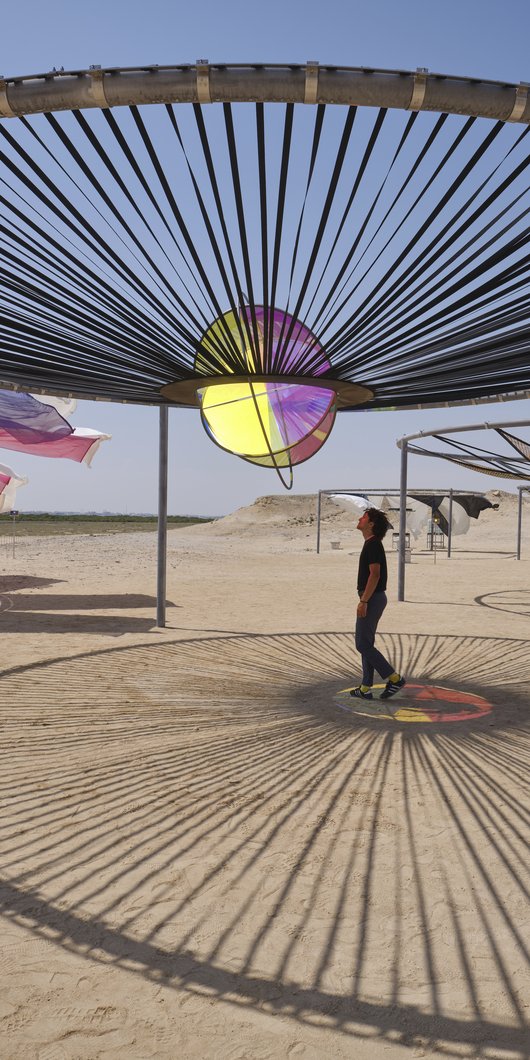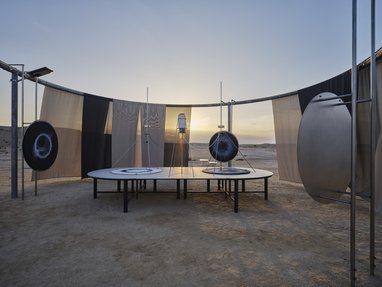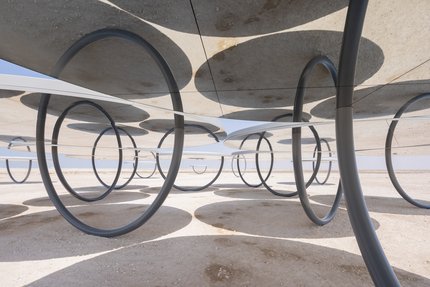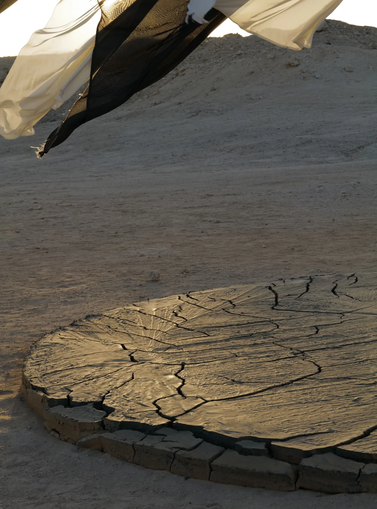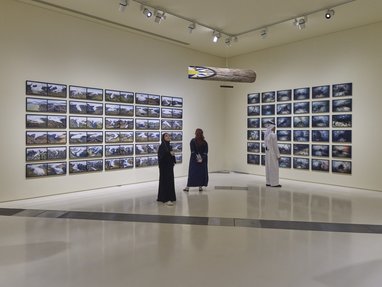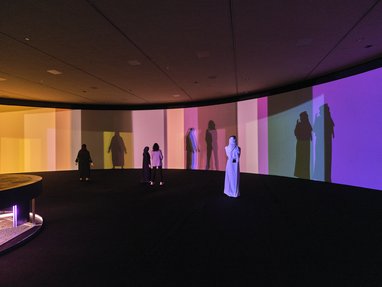On view until 15 August, the exhibition Olafur Eliasson: The curious desert unfolds across two locations: an indoor display at the National Museum of Qatar and an outdoor installation near Al Thakira Mangrove Nature Preserve. The two complementary presentations invite visitors to see the process behind the works, and to reflect, question and actively participate in shaping their own surroundings.
In addition to the temporary exhibition, Eliasson also recently installed Shadows travelling on the sea of the day, a permanent public artwork in the desert just north of Al Zubarah that engages visitors with the movement of the Earth via subtle shifts of light that occur throughout the day.
In this interview, the artist discusses his vision, process and the challenges and opportunities of mounting large-scale outdoor exhibitions in Qatar’s unique environment.
Q. Can you give us some background about your approach to creating site-specific outdoor installations in general, and how you have incorporated the unique features of Qatar's desert environment in particular?
Eliasson: As a child, I was fortunate enough to spend my summer holidays exploring Iceland’s varied landscapes. These formative experiences led me to understand that while these environments initially appear barren, they are actually full of life and are themselves intricate ecosystems. This experience inspired me to understand our relationships with landscape and nature in a different way. To better understand the flow of water in a river, for example, I tried to run at the same speed as the water so that the river looked as though it was standing still and the landscape was moving. While hiking through the landscape, I tried calibrating distance by observing how fast the water fell over waterfalls.
For The curious desert, I was inspired by the prospect of creating artworks that are not simply placed in a natural landscape – in this case, the stunning sabkha [coastal desert salt flat] and the nearby mangrove forest – but instead respond to and interact with the specificities and unique elements of the location, the ephemeral natural phenomena there, such as the wind and the path of the sun. For me, this relationship and interaction is what creates the art.
